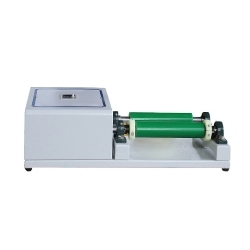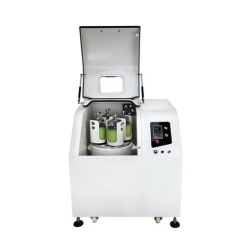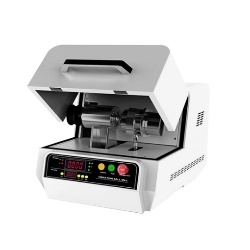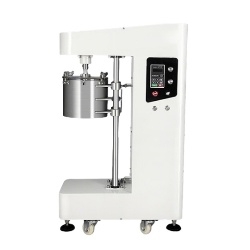As industrial production becomes more sophisticated and research on new materials advances, the demand for precise material grinding continues to grow. Ball mills, as core equipment for crushing and grinding materials, have become indispensable in fields ranging from mining and construction materials to chemical engineering, pharmaceuticals, and new energy.
The current market offers types of ball mills, each with distinct structural designs, working principles, and application scopes. Faced with options like roller ball mills, planetary ball mills, high energy ball mills and stirred ball mill, many people struggle to identify the one that best matches their current needs. This blog will walk you through how to select a ball mill tailored to your specific scenarios and requirements, ensuring your grinding tasks are efficient, precise, and reliable.
Clarify Your Application of Ball Mills
The first step in choosing the right ball mill is to clarify your application for using it. Different applications have vastly different requirements for grinding fineness, processing capacity, material properties, and even whether material modification is needed. Below are the four most common types of ball mills and their typical use cases to help you narrow down your options:
Roller Ball Mill for Large-scale Coarse Grinding
Roller ball mill is the most traditional and widely used type, characterized by a rotating cylindrical grinding chamber. When the cylinder rotates, grinding media (e.g., steel balls) inside rise to a certain height under centrifugal force and then fall due to gravity, impacting and grinding the materials. Roller ball mill excels at large-scale, continuous grinding of relatively hard materials. Most of them are for industrial use, and sometimes they are also used in laboratories. It is ideal for industrial mass production scenarios such as:
- Mining and metallurgy: Grinding gold, copper, and iron ores into fine powders to facilitate subsequent mineral separation.
- Construction materials: Grinding cement raw materials and clinker, as well as processing raw materials for ceramics and glass.
- Chemical engineering: Crushing and grinding bulk chemical raw materials — such as limestone for calcium carbonate production, to meet the particle size requirements of downstream reactions.
Planetary Ball Mill for Lab
Planetary ball mill features a unique "planetary motion" design: a main shaft drives multiple grinding jars to revolve around it (revolution), while each grinding jar rotates independently around its own axis (rotation). This dual-motion pattern generates strong centrifugal force, making the grinding media and materials collide, rub, and shear intensely—enabling ultra-fine grinding. Planetary ball mill is primarily used for small-batch, high-precision grinding in laboratories and small-scale production, such as:
- Material science research: Preparing nanoceramic powders, graphene dispersions, and rare earth functional materials—such as phosphors.
- Electronic materials: Grinding lithium battery cathode materials to ensure uniform particle size and improve battery performance.
- Geology and environmental testing: Grinding rock or soil samples into ultra-fine powders for component analysis.
High Energy Ball Mill for Ultrafining and Material Modification
 High energy ball mill achieves ultra-high energy input via high-speed rotating grinding jars or stirring devices, with some models boasting rotational speeds that exceed 1,000 rpm. This high-speed operation enables the grinding media to gain enormous kinetic energy, which in turn generates violent impacts and friction on the materials being processed. Beyond delivering ultra-fine grinding—capable of reducing materials to the sub-nanoscale—high-energy ball mills can also induce physical and chemical changes in materials, including lattice distortion, alloying, and phase transitions. High energy ball mill is mainly used for scientific research and high-end material preparation requiring material modification:
High energy ball mill achieves ultra-high energy input via high-speed rotating grinding jars or stirring devices, with some models boasting rotational speeds that exceed 1,000 rpm. This high-speed operation enables the grinding media to gain enormous kinetic energy, which in turn generates violent impacts and friction on the materials being processed. Beyond delivering ultra-fine grinding—capable of reducing materials to the sub-nanoscale—high-energy ball mills can also induce physical and chemical changes in materials, including lattice distortion, alloying, and phase transitions. High energy ball mill is mainly used for scientific research and high-end material preparation requiring material modification:
- New energy materials: Preparing silicon-carbon composite anode materials for lithium batteries and catalyst carriers for fuel cells.
- Metallurgy and materials engineering: Producing refractory metal alloys through mechanical alloying and preparing shape-memory alloys or magnetostrictive functional materials.
- Nanomaterial research: Synthesizing metal oxide nanomaterials and studying the mechanism of material nanocrystallization.
Stirred Ball Mill for Fine Grinding of Small Batches
Stirred ball mill has a fixed grinding chamber and a high-speed rotating agitator inside. The agitator actively drives the grinding media and materials to move violently, creating intense shear and impact forces. This design avoids material deposition, ensures uniform grinding, and is particularly suitable for slurry-based materials. Stirred ball mill is widely used in industries requiring efficient grinding of slurries or fine powders:
- Coatings and inks: Grinding pigment slurries to eliminate agglomerates and improve coating smoothness and color uniformity.
- Food and pharmaceuticals: Processing chocolate slurries and traditional Chinese medicine slurries to increase the dissolution rate of active ingredients.
- Electronic ceramics: Preparing ceramic slurries for electronic components to ensure consistent particle size and prevent defects in sintered products.
Key Factors to Consider When Choosing
After gaining a thorough understanding of ball mills, if you're still hesitant, considering the following key factors can help you make a decision.
Processing Capacity and Scale
Processing capacity directly determines the type and model of a ball mill. For large-scale industrial production—such as processing thousands of tons of ore daily—roller ball mills are the best choice. They feature large cylinder volumes and the ability to operate continuously, which fits the demands of mass production. For laboratory research, where only grams to hundreds of grams of samples need processing, or for small-batch production with kilogram-level output, planetary ball mills or high-energy ball mills are more suitable. Stirred ball mills strike a balance between efficiency and scale, making them ideal for medium-sized slurry processing. A typical example is handling tons of coating slurries per day.
Required Grinding Fineness
Fineness is a core indicator for material grinding. If you only need micron-level fineness (10–100 μm, e.g., cement clinker grinding), roller ball mills can meet the demand. For nanoscale fineness (10–1000 nm, e.g., lithium battery material grinding), planetary ball mills are preferred. For sub-nanoscale fineness (<10 nm, e.g., nanomaterial research) or material modification, high energy ball mills are indispensable. Sttired ball mills can achieve both micron and nanoscale fineness, depending on the stirring speed and grinding time.
Material Properties
Hardness, humidity, and chemical reactivity of the material—play a key role in determining the selection of both the ball mill and its grinding media. For hard materials like granite and metal ores, roller ball mills paired with high-hardness grinding media such as steel balls, or high energy ball mills, are preferred for efficient crushing. When dealing with soft or heat-sensitive materials, stirred ball mills with low-speed stirring should be used to avoid overheating or degradation of the material. For corrosive or high-purity materials like pharmaceutical raw materials and semiconductor powders, planetary ball mills or stirred ball mills equipped with corrosion-resistant grinding chambers are the right choices, as they help prevent material contamination.
Operational Convenience and Maintenance
For industrial sites with continuous operation requirements, prioritize ball mills with simple structures and low maintenance costs. For laboratories where operators frequently switch samples, choose easy-to-clean and fast-adjustable models. Stirred ball mills require regular inspection of stirring paddles for wear, while high-energy ball mills need strict control of operating parameters to ensure safety and stability.
Conclusion
No matter the application—whether for industrial mass production, laboratory research, or specialized material processing—a suitable ball mill is a key investment in improving efficiency and ensuring quality. Choosing the right one requires clarifying your core needs (capacity, fineness, material type) and comprehensively evaluating factors like operational convenience and maintenance costs. It should not only meet industry standards and address specific grinding challenges but also balance efficiency and long-term usability.
Whether you need a roller ball mill for large-scale mining operations, a planetary ball mill for laboratory nanomaterial research, a high energy ball mill for advanced material modification, or a stirred ball mill for efficient slurry processing, there are specialized options available. We hope this guide helps you make an informed decision, ensuring your grinding tasks are efficient, precise, and cost-effective. In addition to the information provided in this blog, sisco.com online store also offers a variety of ball mill types—we welcome you to make your purchase!

